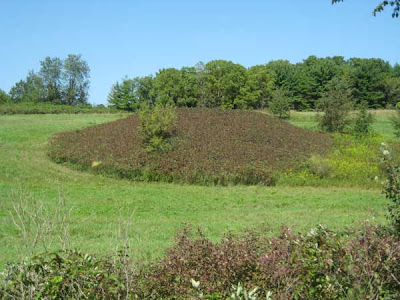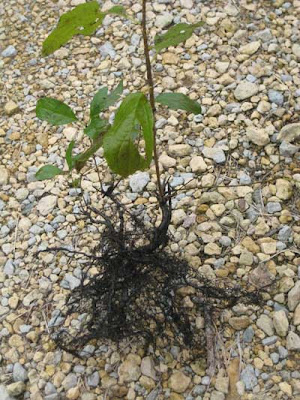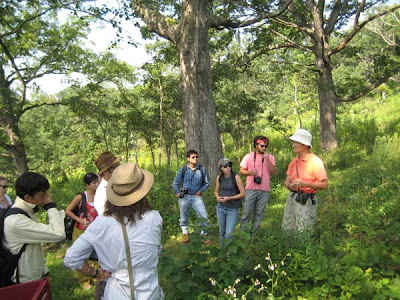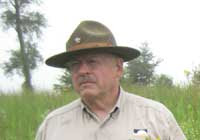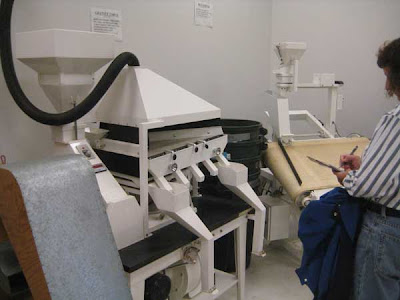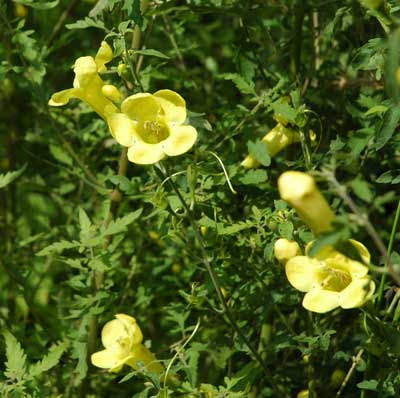Visit to Nachusa Grasslands
At Nachusa Grasslands, TNC is recreating the Midwest's largest remaining prairie landscape. Nachusa (pronounced Nah-choo-sa) provides what must be the best example anywhere of a volunteer-driven conservation initiative.
This project began in 1986 when TNC purchased about 300 acres of land just east of the Rock River in north-central Illinois. The original motivation was to save a number of scattered prairie remnants that had remained untrammeled by the mega Illinois agriculture machine. These remnants were primarily on rocky outcrops that had been unsuitable for row crops and had fortuitously escaped extensive grazing. The photo here shows one of these rocky remnants currently lush with rough blazing star (Liatris aspera), little bluestem, and many other dry-site prairie plants.

Along with the remnants came some ag land that had been in corn and soy beans, and this was where the first prairie plantings at Nachusa were carried out, using seeds collected from the remnants. From this modest beginning Nachusa has turned into a wonderful 3000 acre prairie landscape. Although there is a two-person permanent staff and interns and other temporary paid help, almost all of the prairie plantings have been done by volunteer stewards. Individuals or couples are "given" sites to turn into prairies. They collect, clean, and plant the seed, and then continue to monitor and maintain "their" prairies. Using this model, Nachusa has built a great sense of community. Their annual newsletter, Prairie Smoke, gives some good insights into how Nachusa Grassland works.
Much of the credit for the success of this project must certainly be given to the Nachusa manager, Bill Kleiman.
The photo below gives a good view of what Nachusa looks like. Here, we are standing on a nice prairie remnant (with cream baptisia, prairie bush clover, and many other rarities), looking out across a restored landscape. Prairie as far as the eye can see.

The motivation of the volunteers is impressive. Although Nachusa is in a very unpopulated part of Illinois, 95 miles west the Chicago Loop, volunteers are willing to drive as much as two hours to become involved in this important work. (Overnight weekend housing is provided for volunteers.) As one volunteer said: "We don't play golf. We play in the prairie."
As befitting a TNC project, the site is well equipped, with a large historic barn as a center and an impressive array of motorized equipment. The seed processing facilities are excellent. Each volunteer has his or her own seed drying racks and drum storage containers. Each volunteer dries and cleans his or her own seeds.
 One of the interesting things here is that Nachusa is not compulsive about cleaning seed. Most seed is run through a hammer mill but no other cleaning steps are used. Seeds, chaff, and all are planted. One reason mentioned was that this way insect eggs, fungus spores, or other small biota associated with the seed that may play a role in plant establishment are not removed. Another reason is that this saves a lot of time.
One of the interesting things here is that Nachusa is not compulsive about cleaning seed. Most seed is run through a hammer mill but no other cleaning steps are used. Seeds, chaff, and all are planted. One reason mentioned was that this way insect eggs, fungus spores, or other small biota associated with the seed that may play a role in plant establishment are not removed. Another reason is that this saves a lot of time.Planting is done at very high seeding rates (50 pounds per acre were mentioned). Also, very high species counts are used, with as many as 150 different species per planting. The goal is to achieve the highest diversity possible in the shortest length of time. The excellent results seem to indicate that this approach really works!
In all, it was a great visit. We got lots of ideas, and we met lots of nice people. Thank you, Nachusa!


